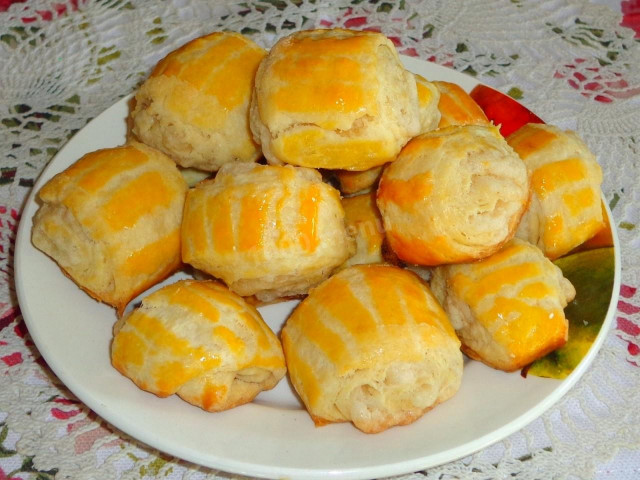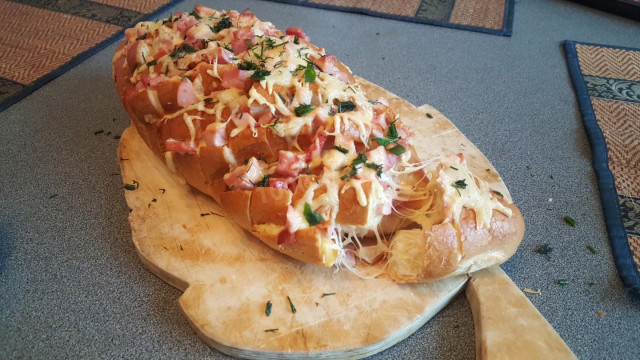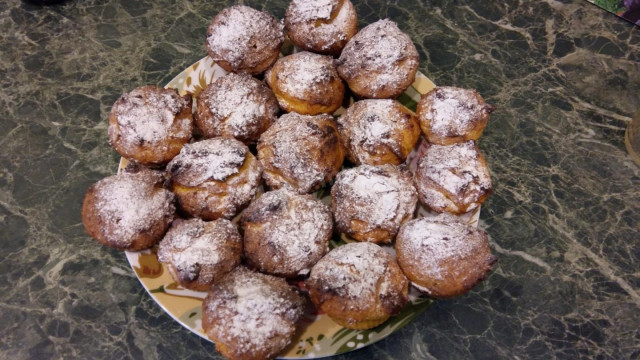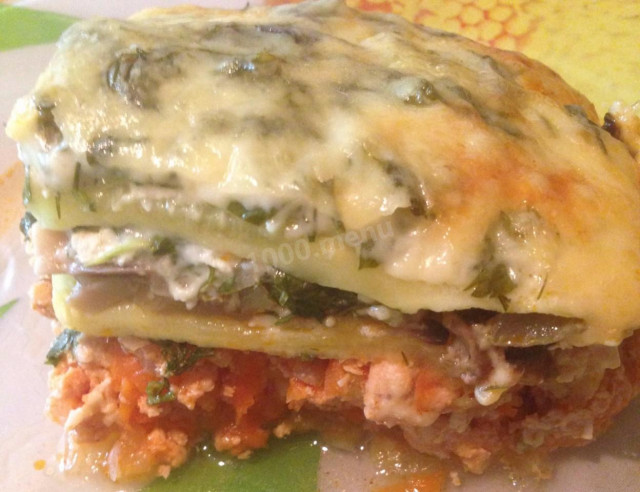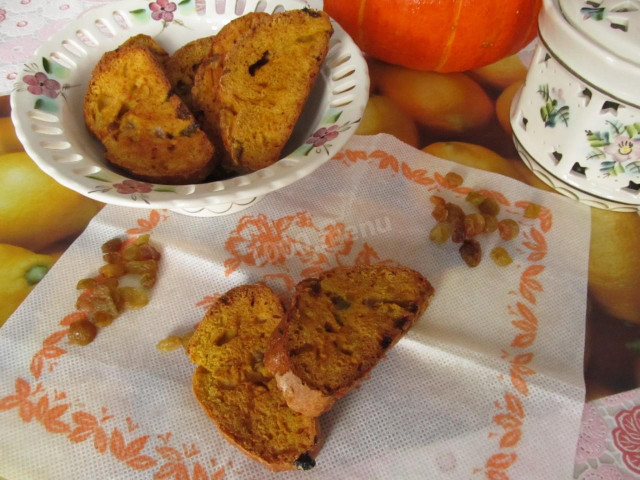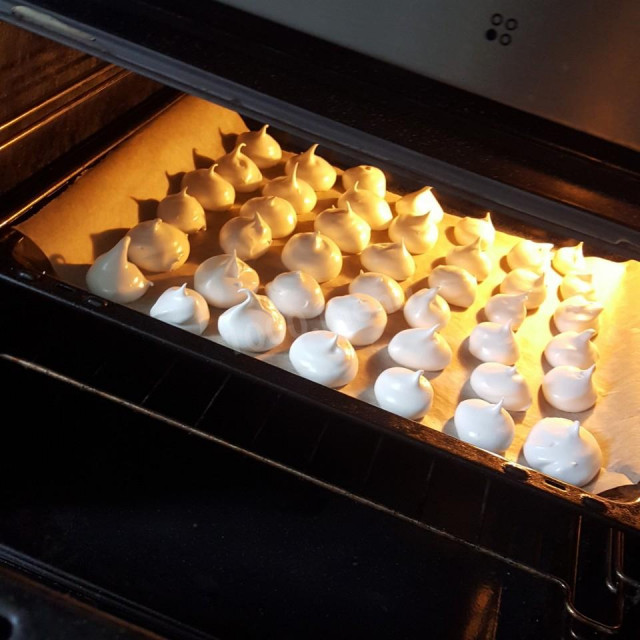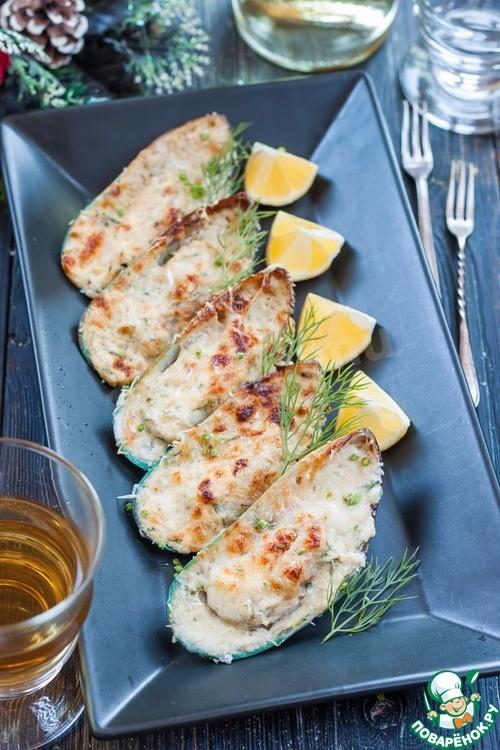Composition / ingredients
Step-by-step cooking
Step 1:
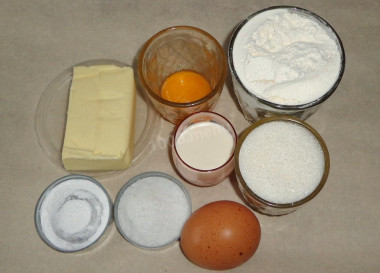
Prepare the necessary ingredients. Take quality products, the taste of cookies will depend on it.
Step 2:
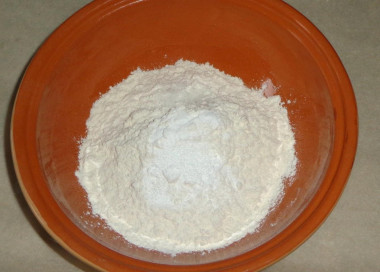
Sift flour into a deep bowl to saturate it with oxygen, then the future baking will turn out lush and airy. The amount of flour can be changed, it all depends on its properties. You need to focus on the desired soft consistency of the dough. Add salt, baking powder, mix. Baking powder can be replaced with baking soda (1 tsp. l.). It is not required to extinguish it with vinegar, since kefir will perfectly cope with this task.
Step 3:
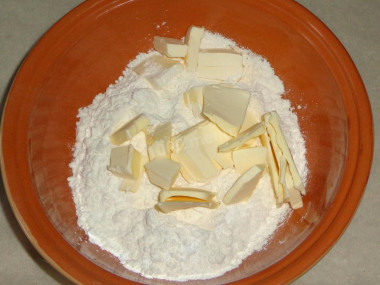
Cut the soft butter into pieces, send it to the flour. Rub your fingers into fine butter crumbs.
Step 4:
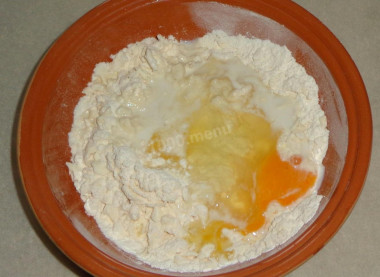
Pour in kefir, add raw chicken egg. Kefir can be replaced with natural yogurt or low-fat sour cream.
Step 5:
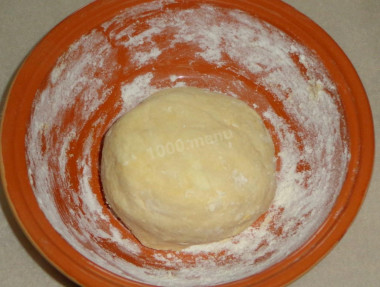
Knead a thick, but not steep dough. If necessary, add a little flour. Assemble the dough into a ball, wrap it in a bag and put it in the refrigerator for at least 30 minutes, or even better overnight. The longer the dough "rests", the better, more plastic it will become.
Step 6:
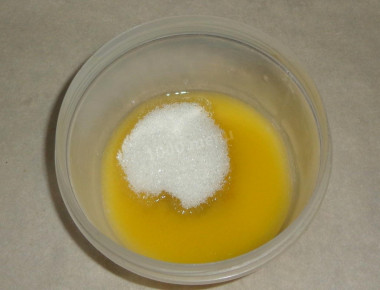
Prepare the filling. Melt the butter in the microwave (read the instructions for your technique) or in a water bath. To do this, take two containers of different diameters. Pour water into a larger saucepan and put it on fire. Place a smaller diameter bowl on top. Send pieces of butter into it. When it melts, turn off the heating. Cool the butter, add sugar or sweetener, which is not afraid of heat treatment. Stir.
Step 7:
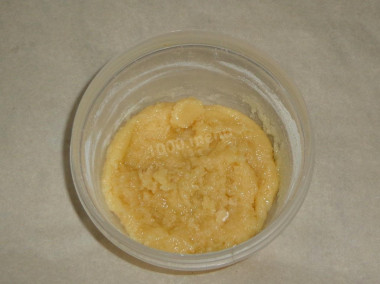
Pour two tablespoons of flour and knead the filling with a homogeneous, soft consistency so that it can be spread.
Step 8:
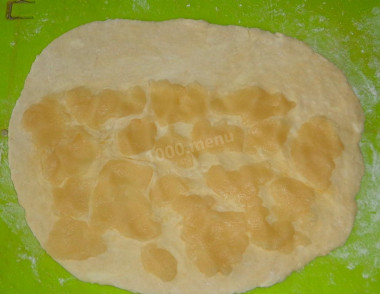
Sprinkle the work surface with flour. Divide the dough into two equal parts. Roll out each piece into a layer about 3 mm thick. Spread the oil filling evenly.
Step 9:
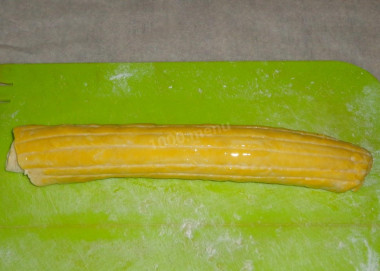
Roll up tightly. Use a cooking brush to brush it with egg yolk. Use a knife to apply shallow strips along the product.
Step 10:
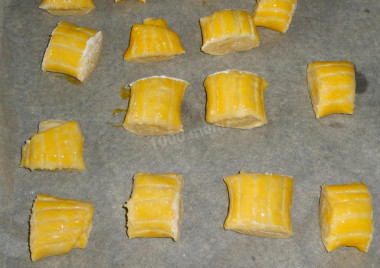
With a sharp knife, cut the roll into pieces 2-3 cm in size. Cover the baking sheet with parchment paper. Arrange the workpieces at some distance from each other.
Step 11:
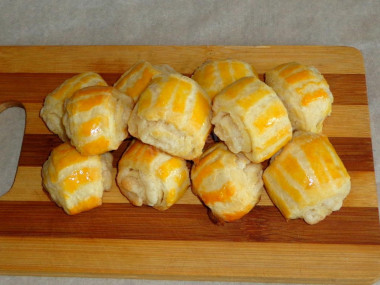
Preheat the oven to 180 degrees (10-15 minutes before cooking). Bake the products for about 20 minutes. Remember that everyone's ovens are different, so the time and temperature may vary. Focus on the specifics of your technique. When the cookies are browned, check the readiness with a wooden toothpick. Remove the baking sheet. Allow the pastry to cool slightly, transfer to a plate and serve with tea. Bon appetit!
In the filling, you can pour not ordinary white sugar, but cane sugar. Then the pastries will acquire a caramel taste and aroma.
If you want, add chopped walnuts or almonds to the oil mixture. Or pour a couple of spoonfuls of cocoa powder, then the filling will be chocolate.
Another option. For a brighter flavor, vanilla sugar or vanillin can be added to the filling. Be sure to read the instructions before using. If you overdo it with vanilla, the taste of cookies will be bitter.
Gat cookies can be stored in a glass or plastic hermetically sealed container.
Be prepared for the fact that you may need more or less flour than indicated in the recipe. You need to focus on how the dough should turn out (dense, soft, liquid, etc.). There is a lot of useful information about why flour, even of the same variety, can have completely different properties, read this article
Keep in mind that everyone's ovens are different. The temperature and cooking time may differ from those specified in the recipe. To make any baked dish successful, use useful information in the article about ovens here
Caloric content of the products possible in the composition of the dish
- Granulated sugar - 398 kcal/100g
- Sugar - 398 kcal/100g
- Kefir fat - 62 kcal/100g
- Kefir of 1% fat content - 38 kcal/100g
- Low-fat kefir - 30 kcal/100g
- Kefir "doctor beefy" 1,8% fat content - 45 kcal/100g
- Kefir 2.5% fat content - 53 kcal/100g
- Butter 82% - 734 kcal/100g
- Amateur unsalted butter - 709 kcal/100g
- Unsalted peasant butter - 661 kcal/100g
- Peasant salted butter - 652 kcal/100g
- Melted butter - 869 kcal/100g
- Salt - 0 kcal/100g
- Wheat flour - 325 kcal/100g
- Baking powder - 79 kcal/100g
- Egg yolks - 352 kcal/100g
- Chicken egg - 80 kcal/100g

